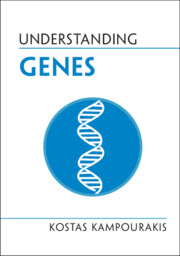Book contents
- Understanding Genes
- Series page
- Understanding Genes
- Copyright page
- Reviews
- Dedication
- Contents
- Foreword
- Preface: Genes, Science, and Science Fiction
- Acknowledgments
- 1 The Public Image of Genes
- 2 The Origin and Evolution of the Gene Concept
- 3 The Devolution of the Gene Concept
- 4 There Are No “Genes For” Characteristics or Disease
- 5 What Genes “Do”
- 6 The Dethronement of Genes
- Concluding Remarks: How to Think and Talk about Genes?
- Summary of Common Misunderstandings
- References
- Index
3 - The Devolution of the Gene Concept
Published online by Cambridge University Press: 17 February 2022
- Understanding Genes
- Series page
- Understanding Genes
- Copyright page
- Reviews
- Dedication
- Contents
- Foreword
- Preface: Genes, Science, and Science Fiction
- Acknowledgments
- 1 The Public Image of Genes
- 2 The Origin and Evolution of the Gene Concept
- 3 The Devolution of the Gene Concept
- 4 There Are No “Genes For” Characteristics or Disease
- 5 What Genes “Do”
- 6 The Dethronement of Genes
- Concluding Remarks: How to Think and Talk about Genes?
- Summary of Common Misunderstandings
- References
- Index
Summary
During the 1970s, more puzzling observations were made. The first was that the genome of animals contained large amounts of DNA with unique sequences that should correspond to a larger number of genes than anticipated. It was also observed that the RNA molecules in the nuclei of cells were much longer than those found outside the nucleus, in the cytoplasm. These observations started making sense in 1977, when sequences of mRNA were compared to the corresponding DNA sequences. It was shown that certain sequences that existed in the DNA did not exist in the mRNA, and that therefore they must have been somehow removed. It was thus concluded that the genes encoding various proteins in eukaryotes included both coding sequences and ones that were not included in the mRNA that would reach the ribosomes for translation. These “removed” sequences were called introns, to contrast them with the ones that were expressed in translation, which were called exons. The procedure that removed the intron sequences from the initial mRNA and that left only the exon sequences in the mature mRNA was named “RNA splicing.”
Keywords
- Type
- Chapter
- Information
- Understanding Genes , pp. 65 - 95Publisher: Cambridge University PressPrint publication year: 2021



